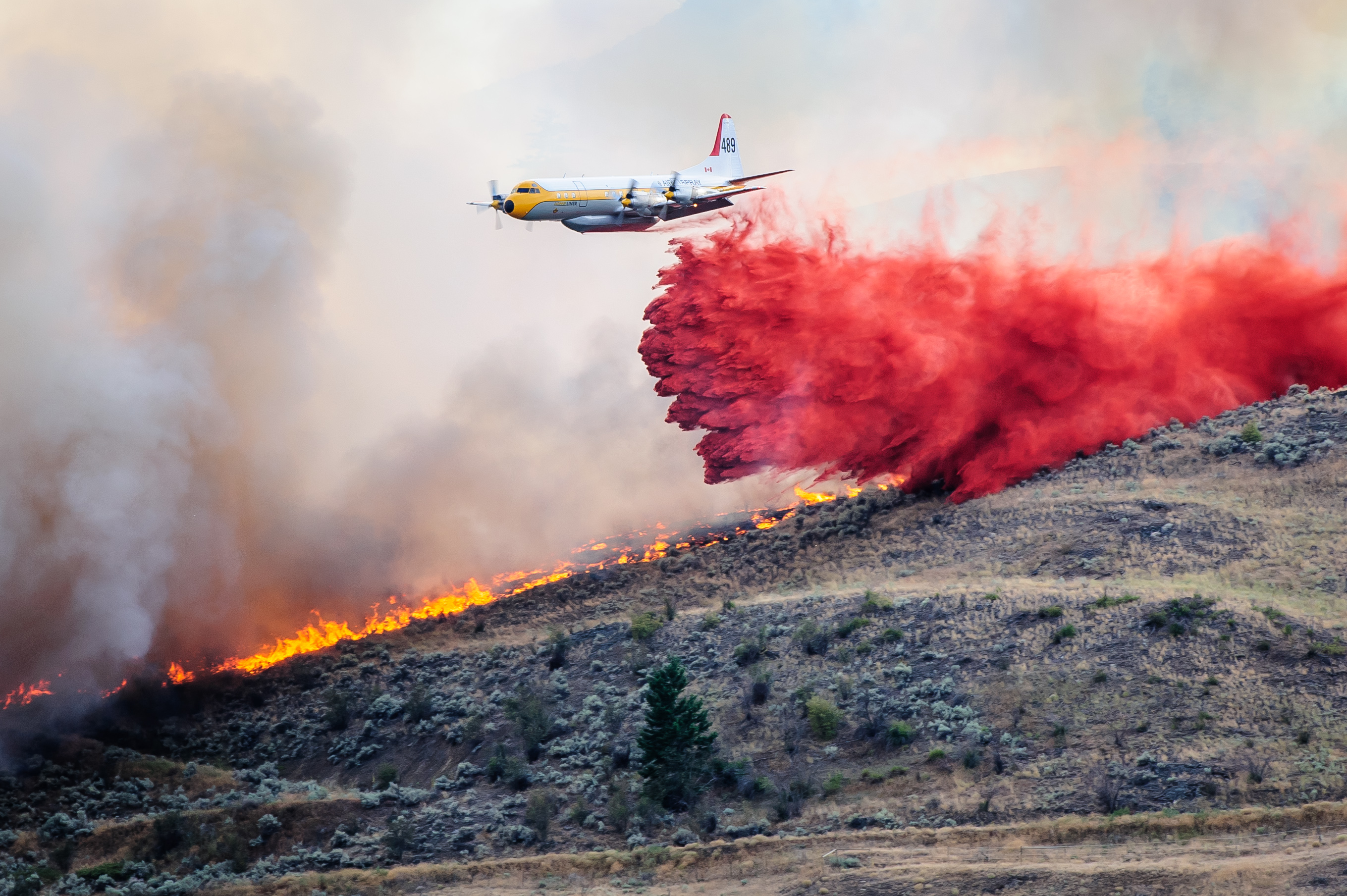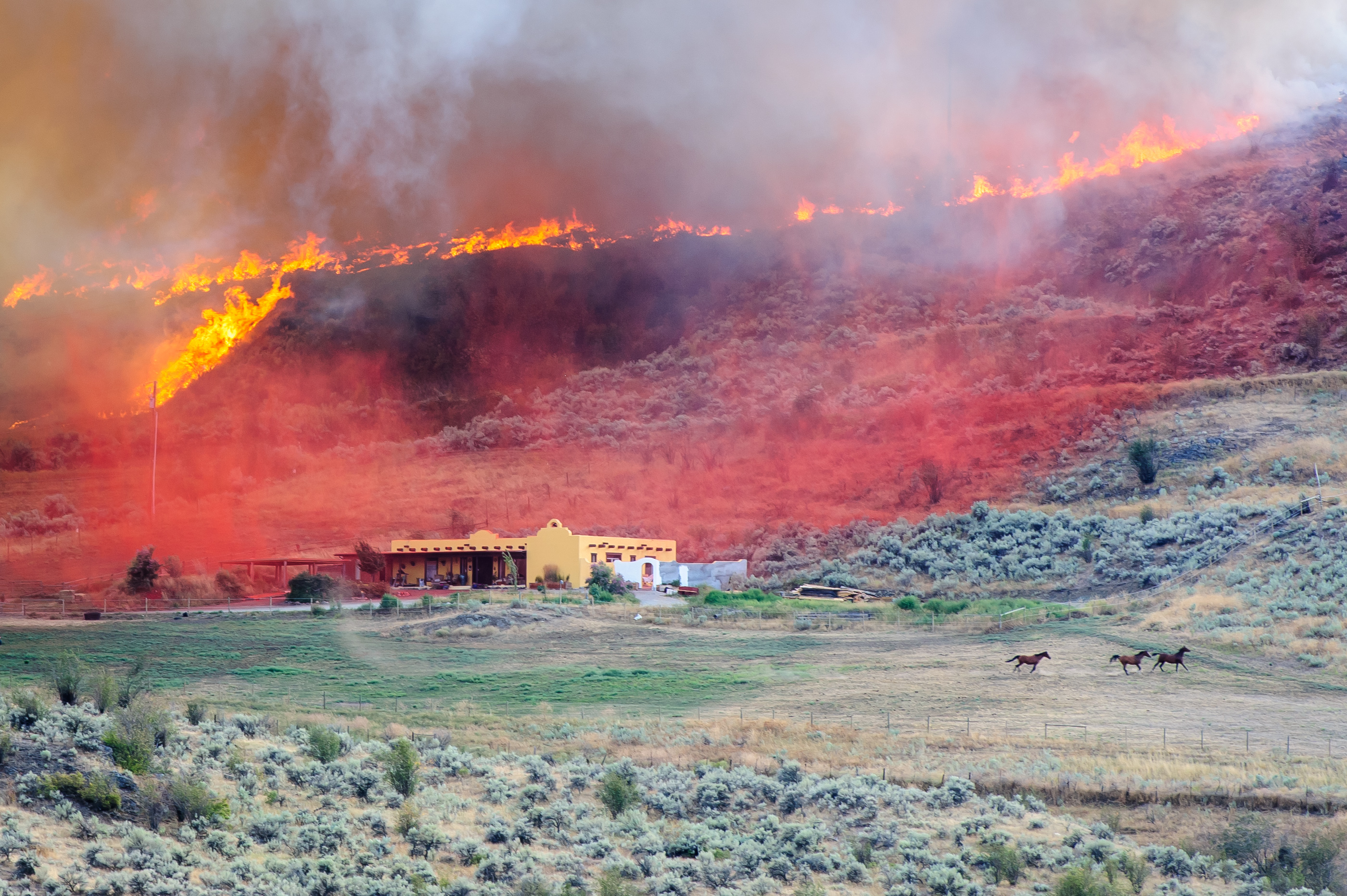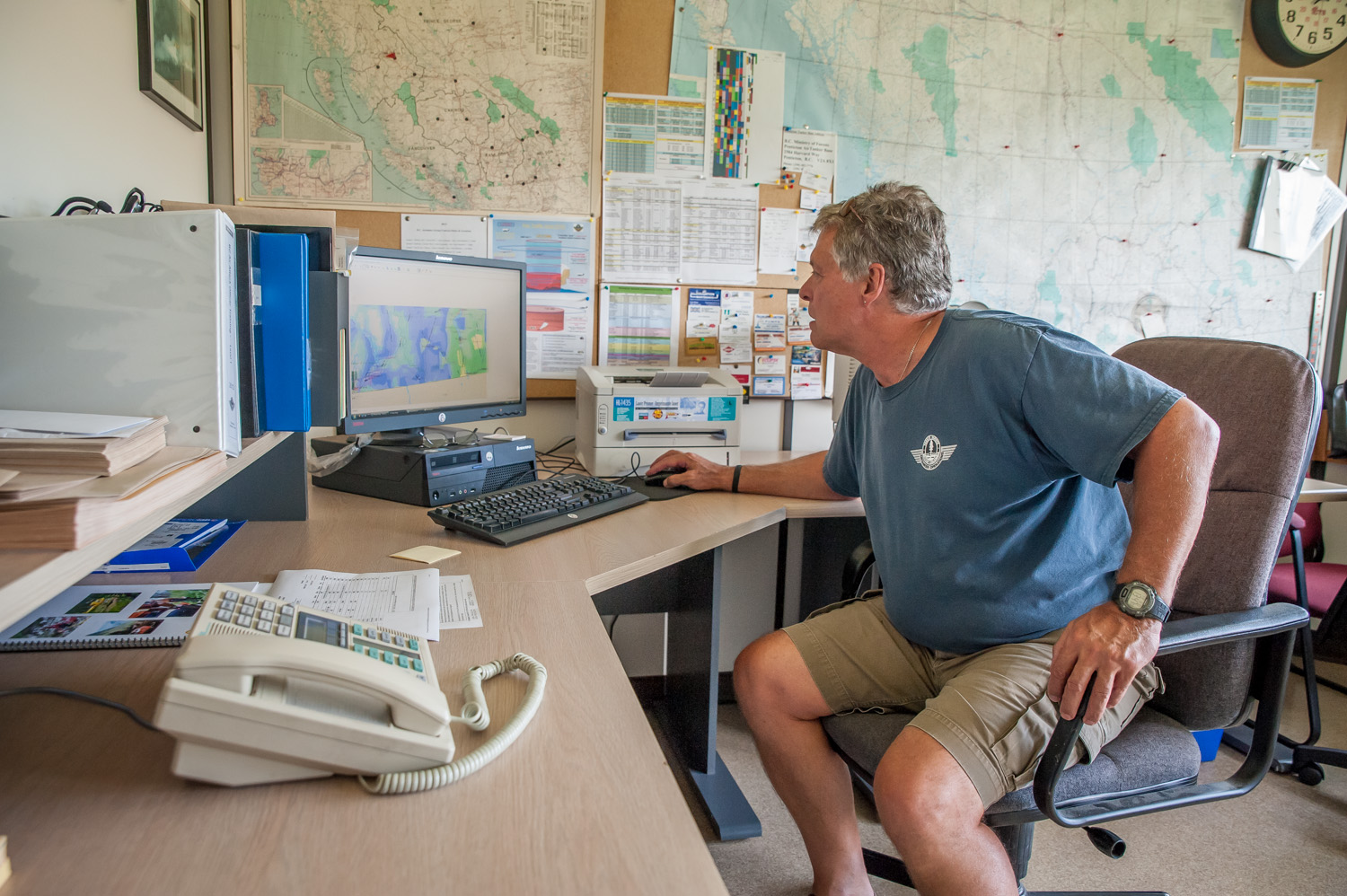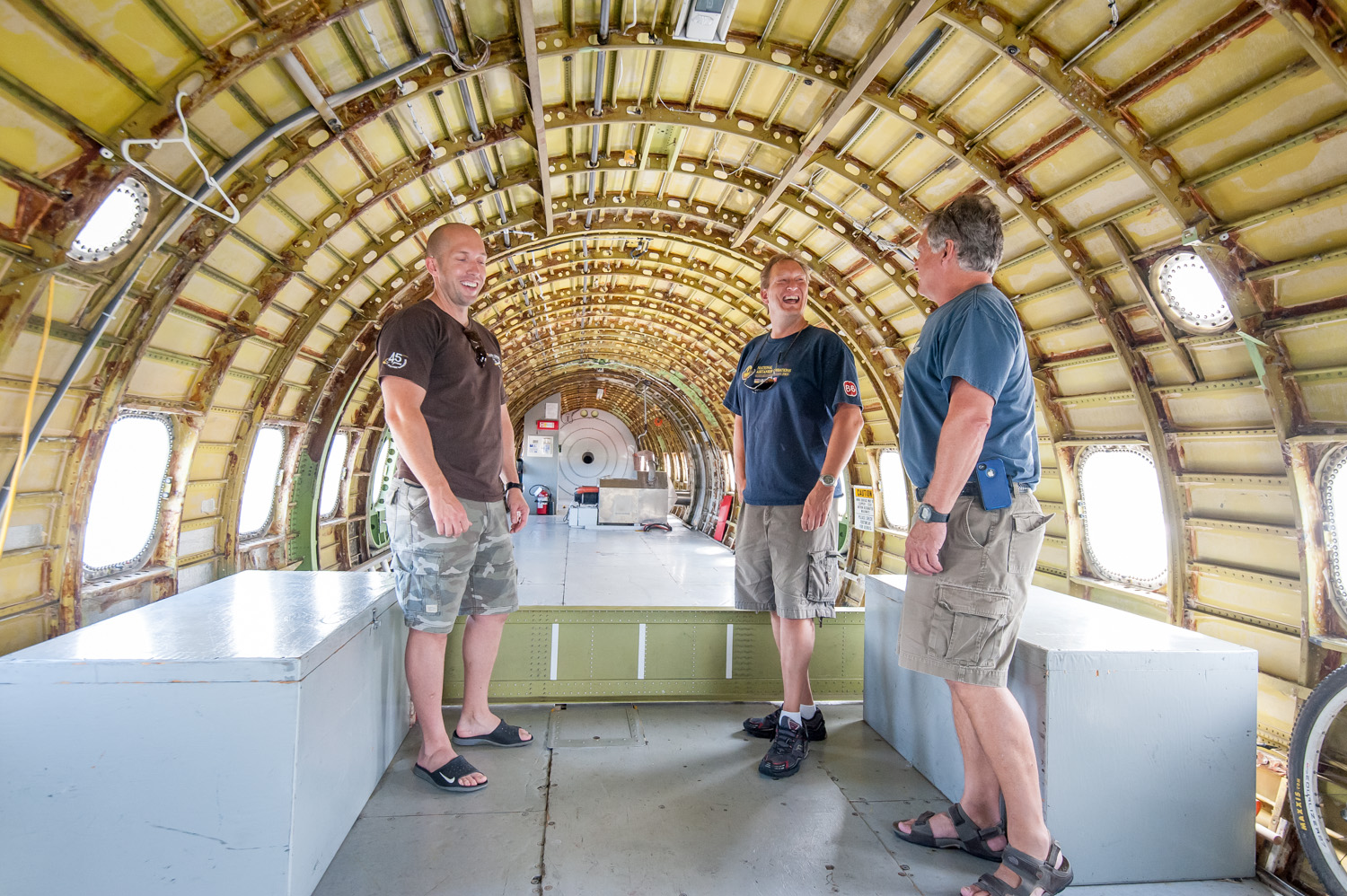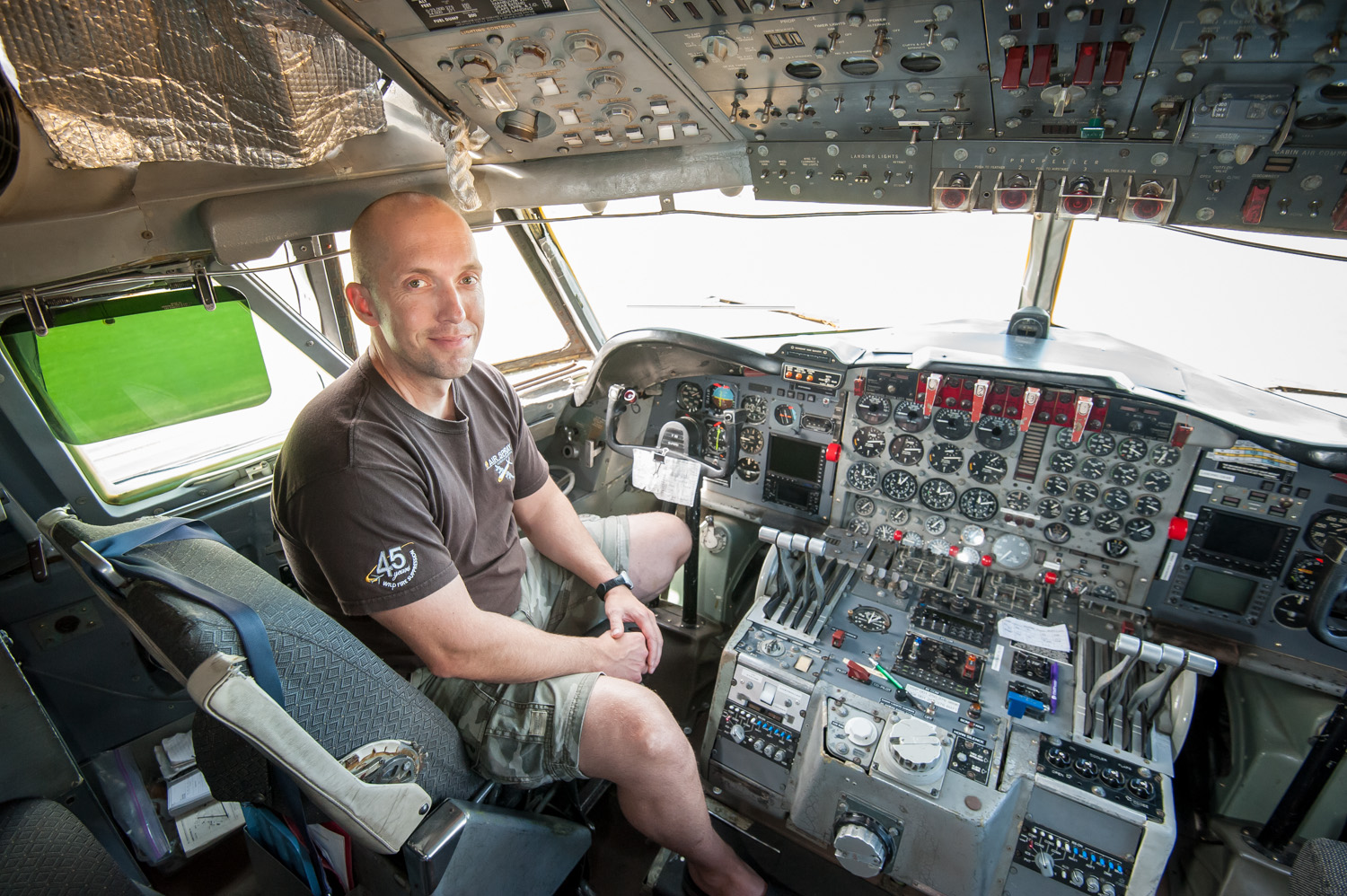I was heading home from work on Aug. 19 when I saw smoke on a nearby mountain. As there was a fire ban in force, I thought I’d better check it out.
Fortunately I had my camera with me. As a reporter/photographer, you’re always on call.
It was scary to see how quickly the fire spread from near the top of a large hill down towards the houses of Kilpoola Estates next to Spotted Lake. But it was reassuring to see how quickly planes from the Wildfire Management Branch arrived at the scene, as well as ground-based firefighters. Eventually, there were 35 firefighters, two helicopters and five air tankers used in the effort.
While the helicopters scooped up water from small lakes nearby, the tankers or bombers flew in from their bases loaded up with red fire retardant, which they dropped at the edge of the fire in its path to slow its spread. The fire was under control before it could do any serious damage, but hot spots continued burning for days, keeping ground crews busy.
From Hwy. 3 at Spotted Lake I could watch and photograph the action unfolding, and I captured some of the photos shown here. A couple weeks later, I visited the Penticton Air Tanker Base to interview and photograph the crew there that flies the planes and fights the fires from the air. I’ve included some of those photos here too.
You can read my story about the Penticton Air Tanker operation here.
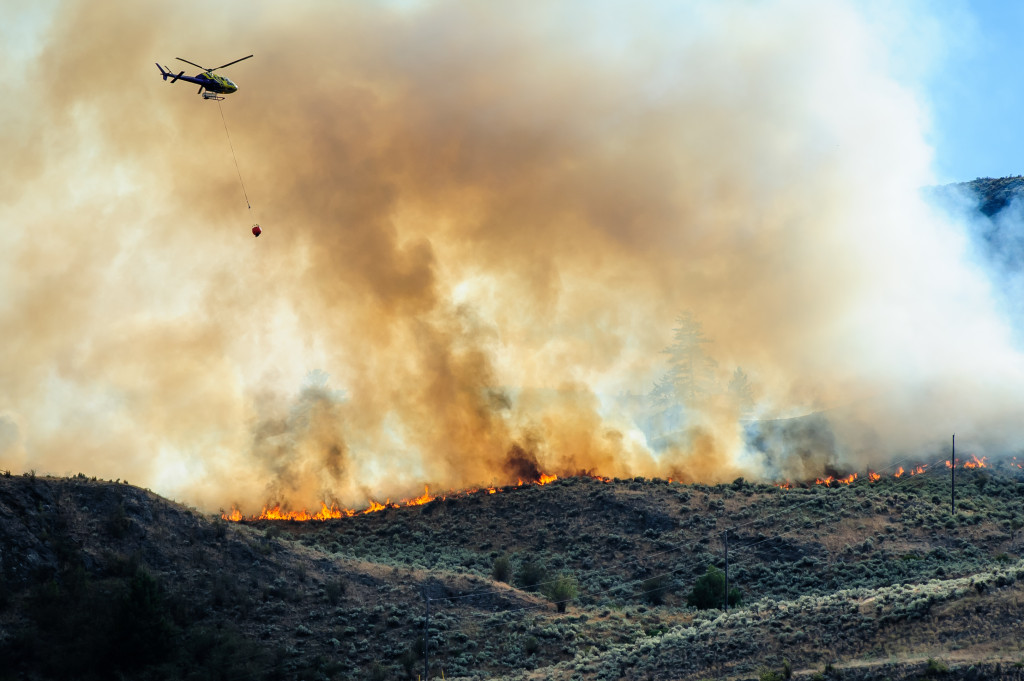
A helicopter prepares to drop water on a fire that burned through sagebrush near Spotted Lake west of Osoyoos on Aug. 19, 2013. (Richard McGuire photo)
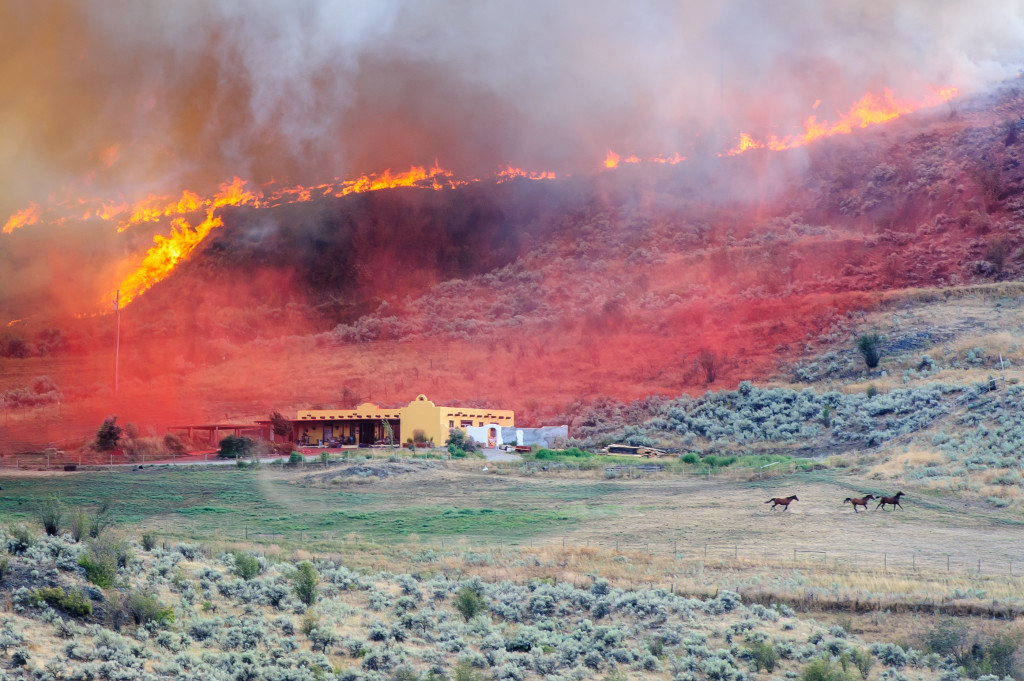
As red fire retardant settles onto a strip of land between a large house and the approaching fire, horses run in fear around the field below. The wildfire occurred Aug. 19, 2013 near Spotted Lake west of Osoyoos. (Richard McGuire photo)
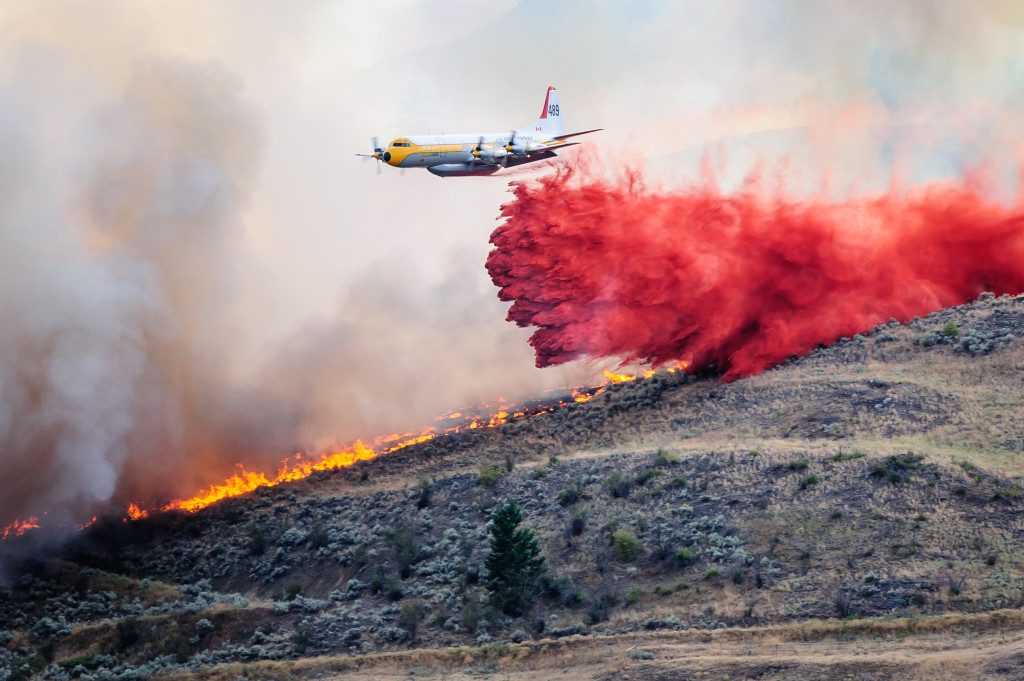
A bomber plane drops red fire retardant on a strip of land between approaching flames and a large house. With this one drop, it appeared to stop the flames from gaining on the house. The brush fire occurred Aug. 19, 2013 night near Spotted Lake west of Osoyoos. (Richard McGuire photo)

A bird dog plane flies above a fire marking the route for a bomber to follow. The fire was fanned by gusting winds as it spread through sagebrush near Spotted Lake west of Osoyoos on Aug. 19, 2013. The aerial attack on the fire is directed from the bird dog. (Richard McGuire photo)

A bomber plane drops red fire retardant on flames that burned Monday evening through the sagebrush near Spotted Lake west of Osoyoos. (Richard McGuire photo)

The Penticton Airtanker Base is located at the Penticton Airport. Employees and contractors fight fires over a large part of southern B.C. from the base. They can reach Osoyoos in a matter of minutes. (Richard McGuire photo)
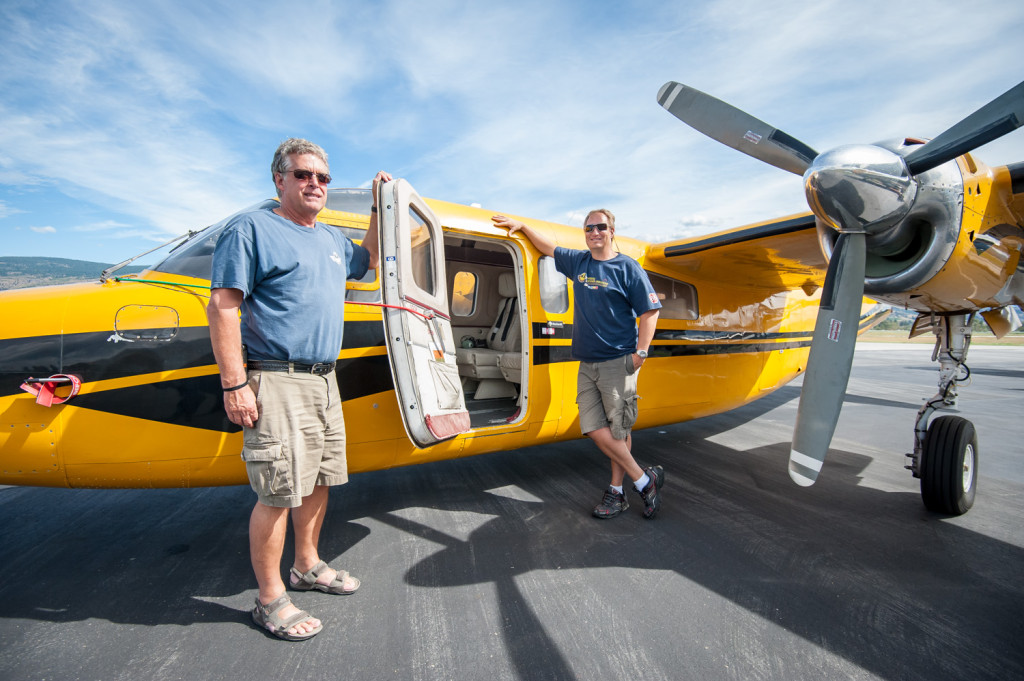
The “bird dog,” a Rockwell Turbo Commander 690, is the flying command post when fighting fires. Ben Moerkoert (left) Air Attack officer, commands the attack and coordinates the planes, while Pete Loeffler pilots the plane. Loeffler is also a training captain. (Richard McGuire photo)
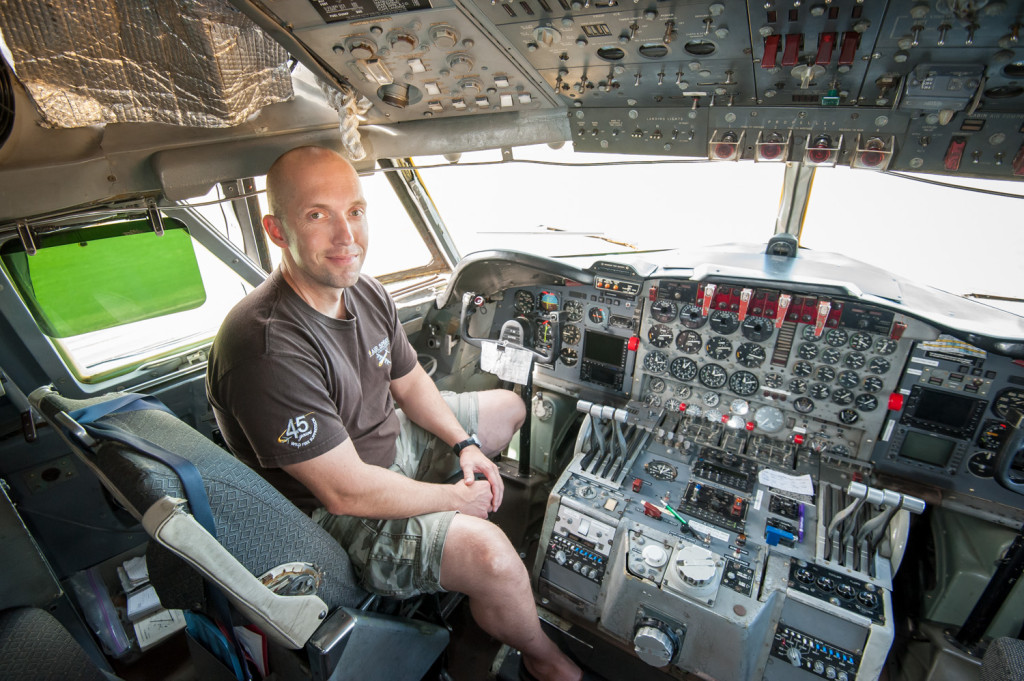
Jeff Pulkinen works a a co-pilot flying this Electra L188 air tanker. The crew can set the amount of retardant dropped with instruments added to the panel to the right of Pulkinen’s knees. They drop the load with release buttons at their fingertips. (Richard McGuire photo)
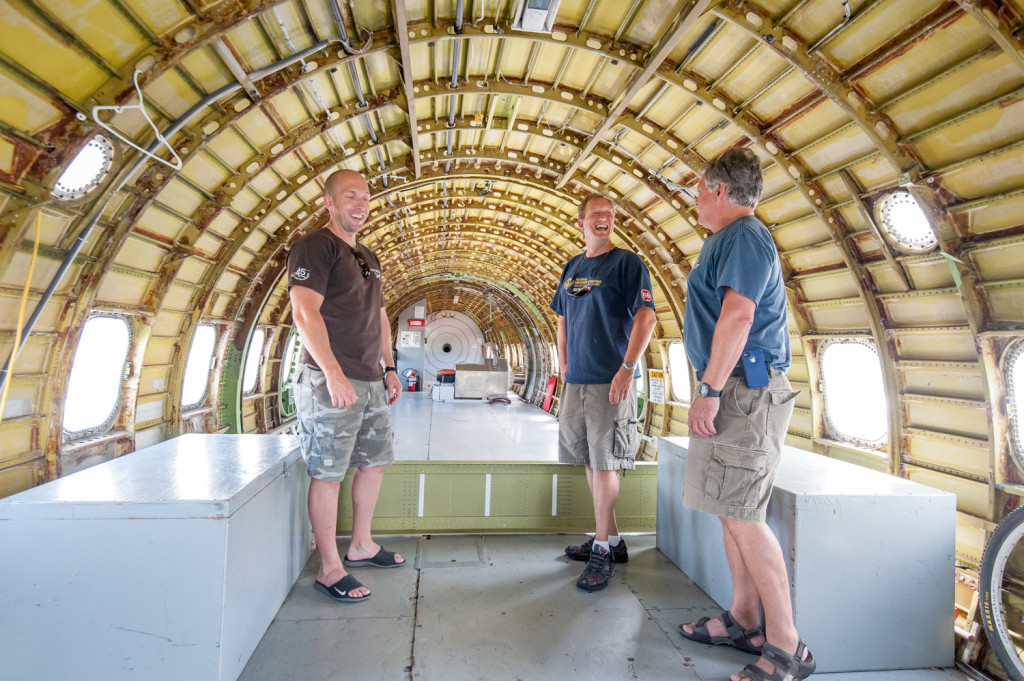
The insides of this Electra L188, now used as an air tanker, have been removed. One this turboprop plane carried passengers after it was built in the late 1950s. According to legend on the base, movie star Marilyn Monroe was once a passenger on this plane. From left Jeff Pulkinen, Pete Loeffler and Ben Moerkoert share a joke. (Richard McGuire photo)
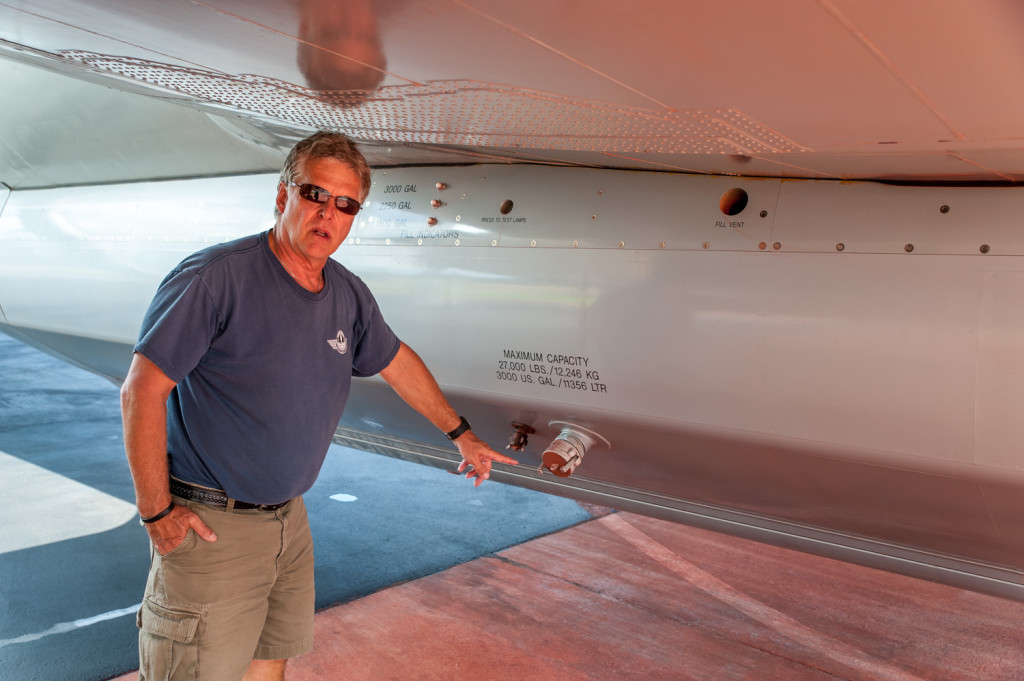
Ben Moerkoert, Air Attack officer, points to where a hose is connected to fill a tank with fire retardant. The tank can hold up to 3,000 U.S. gallons. Sometimes the plane is flown back to base after it drops its load so that more retardant can be added for another drop. (Richard McGuire photo)
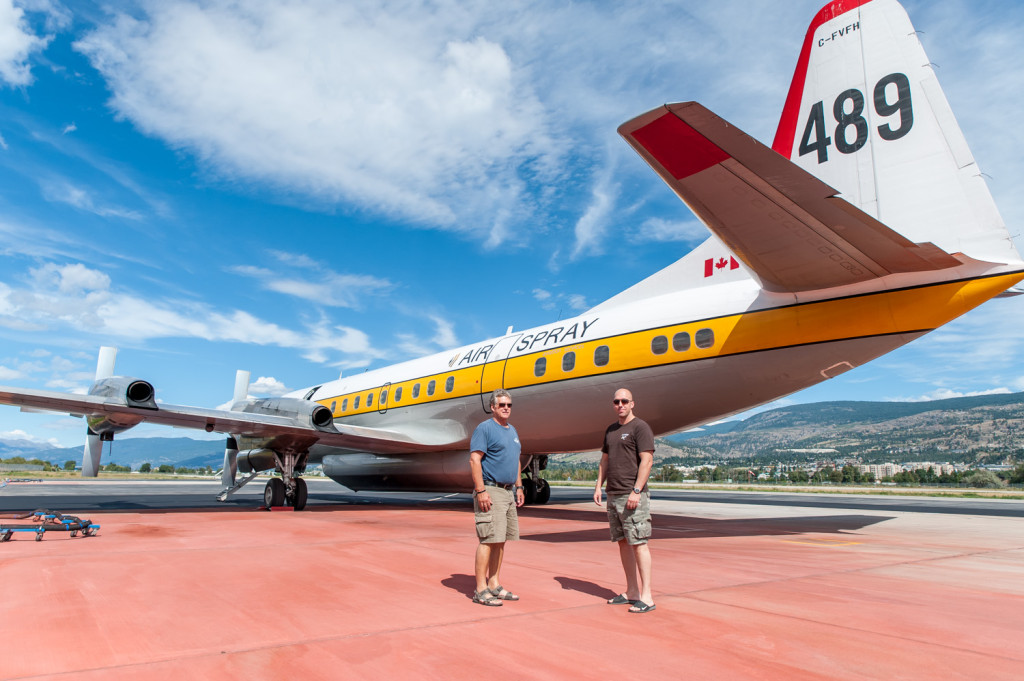
Ben Moerkoert (left) Air Attack officer, and Jeff Pulkinen, co-pilot, stand on the tarmac below an air tanker made from a converted Electra L188, a turboprop plane first introduced in 1957. The tarmac is red from spilled fire retardant. (Richard McGuire photo)
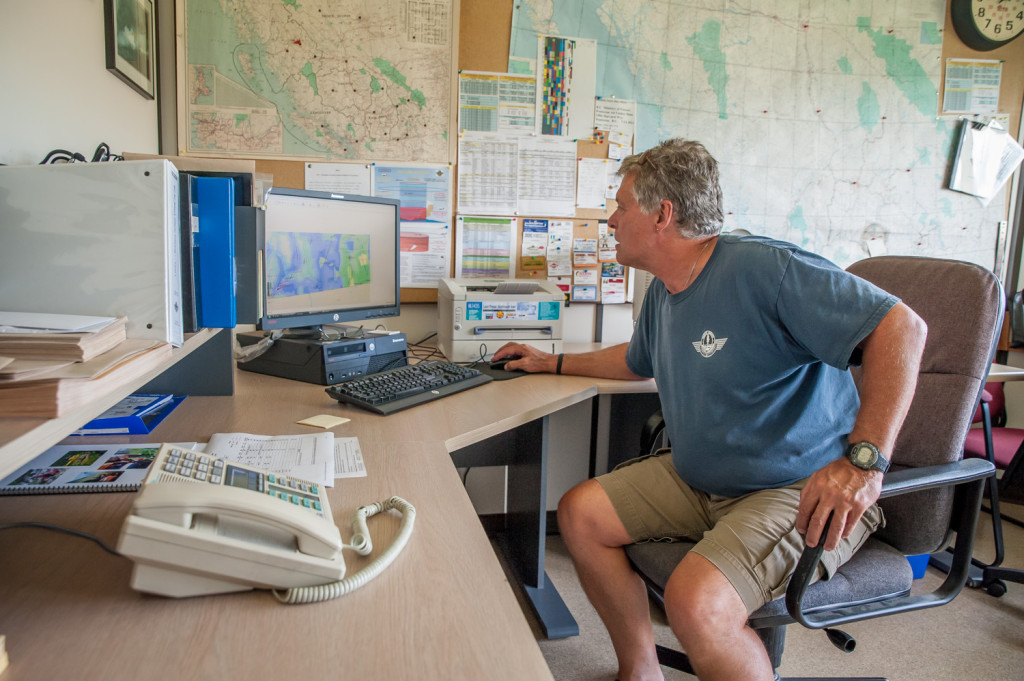
Ben MoerKoert, Air Attack officer, can see all wildfire activity and air attack crews in the province on a computer at the Penticton Airtanker Base. Before computers, communication was by radio. (Richard McGuire photo)

